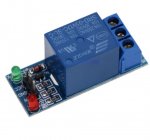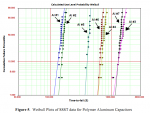=AK=
New member
Учите матчасть, чмо невежественноеИ предохранителей к каждому (или в каждый кондер) не ставят
https://www.vishay.com/docs/40110/faq.pdf
Q: What is the difference between fused (Vishay Sprague 893D, TF3, T86, T96, T98, T42) and standard, non-fused (Vishay Sprague 293D, 593D, TR3, T83, T95, T97 and others) tantalum capacitors?
A: The fused series were designed to operate in high-current applications (> 10 A) and employ a fusing mechanism. The TF3 series, in addition to its built-in-fuse, offers lower ESR levels. The T86 series is hi rel COTS with a built-in-fuse and two ESR levels. Among the conformal-coated capacitors there are two product series with a built-in fuse: the T96 and T98. All series employ similar fuse mechanisms.
The fuse activation time isbased on a current heating (I2R) effect and is therefore dependent on the fuse resistance (i.e.material, length, and diameter) and available current. This type of fuse is ideal for high-current applications, but is not suitable for low-current applications. As the fusing activation indicates, the fusing time increases significantly when the available current is below approximately 3.5 A (see
Typical Fuse Activation Curve). The capacitor fuse will not “open” below 2 A because the I2R is below the energy required to activate the fuse. Between 2 A and 3 A, the fuse will eventually activate, but some capacitor and circuit board “charring” may occur. In summary, built-in-fuse capacitors are ideal for high-current circuits where capacitor “failure” can cause system failure. The fuse will prevent capacitor or circuit board “charring” and usually will prevent any circuit interruption that can be associated with capacitor failure. A “shorted” capacitor across the power source can cause current and/or voltage transients that trigger system shutdown. The fuse activation time is sufficiently fast in most instances to eliminate excessive current drain or voltage swings. Built-in-fuse capacitors were designed to operate in circuits with no external series resistance. The fuse changes the failure mode from a “short” circuit to an “open” circuit.
Последнее редактирование:










